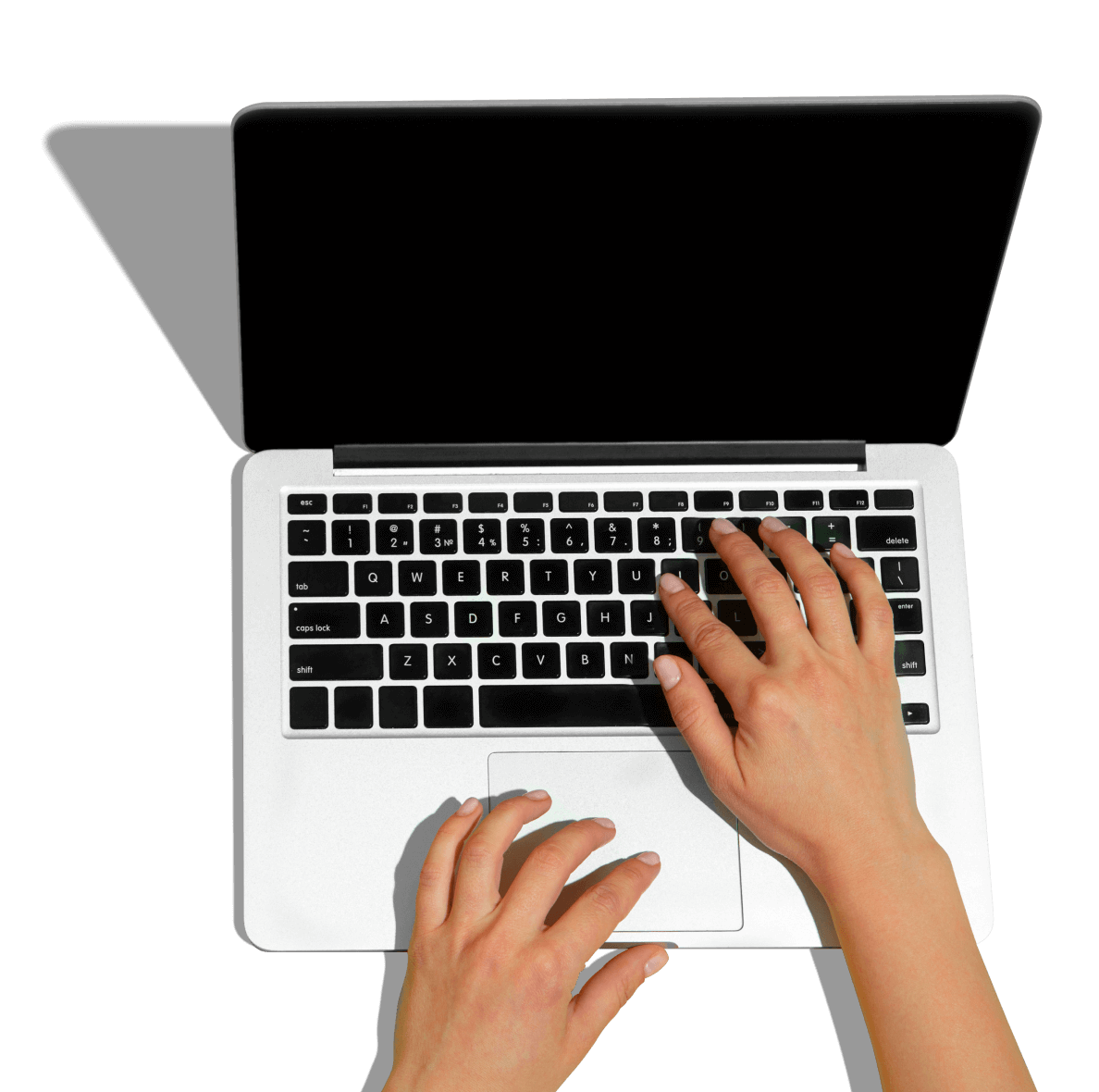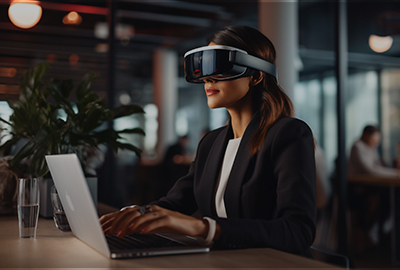
UI/UX designers find themselves at the forefront of change, constantly adapting to new trends and challenges. As we look ahead to 2025, UI/UX design is set to undergo significant transformations driven by technological advancements, changing user behaviors, and the integration of artificial intelligence (AI). This blog explores the upcoming changes for UI and UX designers, providing insights into how the industry is evolving and what steps professionals can take to stay ahead.
I. Introduction UX UI Trends 2025
In the dynamic landscape of digital technology, the significance of UI/UX design trends for 2025 cannot be overstated. As we move forward into the next era of digital innovation, the evolution of user interfaces and experiences plays a pivotal role in shaping how users interact with technology. From websites to mobile apps, and even emerging technologies like virtual reality (VR) and augmented reality (AR), UI/UX trends dictate the direction of digital experiences, influencing user satisfaction, engagement, and overall success of products and services.
Understanding the impact of UI/UX trends on user experience is crucial for businesses and designers alike. A seamless and intuitive user interface coupled with a delightful user experience can differentiate a brand in a crowded market, fostering customer loyalty and driving business growth. Conversely, neglecting UI/UX trends can result in frustration, abandonment, and ultimately, loss of revenue and reputation.
As we delve into the realm of UI/UX design trends for 2025, it's essential to explore the primary and secondary keywords driving this discourse: UI design trends 2025 and UX design trends 2025. These keywords encapsulate the forefront of design innovation, offering insights into the upcoming developments that will shape the digital experiences of tomorrow.

II. Best UX UI Trends 2025
- Emerging UI Design Trends for 2025
A. Exploring the Latest UI Design Innovations
In the rapidly evolving landscape of UI design, innovations are constantly reshaping the digital experience. This section delves into some of the most promising trends anticipated to define UI design in 2025.
B. AI-Powered Interfaces
1. Explanation of AI's role in shaping UI design:
Artificial Intelligence (AI) is revolutionizing UI design by enabling dynamic, personalized user experiences. Through machine learning algorithms, AI analyzes user behavior and preferences to adapt interface elements in real-time, optimizing usability and engagement. Contact Us for AI and Machine Learning Development Services
2. Examples of AI-driven UI innovations:
Examples of AI-driven UI innovations include chatbots that provide personalized assistance, recommendation systems that curate content based on user preferences, and predictive interfaces that anticipate user needs, enhancing overall user satisfaction and efficiency.
C. Immersive User Experiences
1. Overview of immersive UI trends such as AR and VR:
Immersive technologies like Augmented Reality (AR) and Virtual Reality (VR) are reshaping UI design by offering users interactive and immersive experiences. AR overlays digital content onto the real world, while VR transports users to virtual environments, creating rich and engaging interactions.
2. Impact of immersive experiences on user engagement:
Immersive UI trends enhance user engagement by providing more interactive and immersive experiences. AR and VR technologies offer users a deeper level of immersion, fostering emotional connections and increasing user retention and satisfaction.
D. Minimalist Design Aesthetics
1. Analysis of the rise of minimalist UI designs:
Minimalist UI designs prioritize simplicity and clarity, stripping away unnecessary elements to focus on essential content and functionality. This approach emphasizes clean layouts, ample white space, and intuitive navigation, creating visually appealing interfaces that are easy to understand and navigate.
2. Benefits of minimalist aesthetics in UI/UX:
Minimalist UI designs offer several benefits, including faster loading times, improved usability, and enhanced user focus. By decluttering interfaces and emphasizing essential elements, minimalist designs reduce cognitive load, leading to a more enjoyable and efficient user experience.
- Emerging UX Design Trends for 2025
A. Unveiling the Future of UX Design
In the dynamic landscape of UX design, 2025 promises groundbreaking trends that redefine user experiences. Let's delve into key aspects shaping the future of UX.
B. Personalized User Journeys
1. Personalized UX has become increasingly important in the digital landscape, as it allows businesses to cater to the individual needs and preferences of users.
2. Implementing personalized user journeys involves leveraging data analytics and user behavior insights to tailor the user experience based on factors such as past interactions, demographics, and preferences. Techniques such as user segmentation, recommendation engines, and dynamic content delivery play a crucial role in creating personalized experiences.
C. Voice User Interfaces (VUI)
1. Voice User Interfaces (VUI) are revolutionizing the way users interact with digital products and services by enabling voice commands and responses.
2. VUI has a profound impact on UX design by offering hands-free and intuitive interactions, especially in smart devices and virtual assistants like Amazon Alexa and Google Assistant. Examples of successful VUI implementations include voice-activated navigation systems, voice-controlled smart home devices, and voice-enabled customer service bots.
D. Inclusive Design Principles
1. Inclusive UX design trends focus on creating digital experiences that are accessible to users of all abilities, backgrounds, and preferences.
2. Ensuring accessibility in modern UX design involves adhering to inclusive design principles such as providing alternative text for images, implementing keyboard navigation options, and optimizing color contrast for readability. Accessibility is not only a legal requirement but also enhances the overall user experience for everyone, regardless of their limitations or disabilities.
III. The Changing Role of UI Designers
1. No More Codeless Hand-offs
Traditionally, designers have created static slideshows for prototypes and hand-offs to developers. However, with coding becoming a more common skill across the industry, the distinction between designers and developers is blurring. The rise of "coding designers" is inevitable in this agile environment, where multi-skilled product talents are in demand. For non-tech designers, this shift emphasizes the need to adapt and possibly acquire basic coding skills to thrive.
2. Next-Generation Design Tools
As technology advances, design tools are evolving to meet the changing needs of the industry. It's crucial to recognize that designers aren't the only users of these tools – engineers and product managers are also heavily involved. Leading design tools are expected to cater to technical requirements, and designers may need to catch up with the latest developments. Webflow, Framer X, and UXPin are examples of tools that already incorporate production code components. Designers are encouraged to explore these tools and stay updated on emerging trends in design technology.
Tips for UI Designers:
- Experiment with Webflow to understand website structures without writing code.
- Familiarize yourself with Framer X, a tool that empowers designers to use real code for component building.
- Explore UXPin for team collaboration in design projects.
3. Brand New Design Patterns
The introduction of AI is likely to reshape common user workflows. Users may transition from manually browsing content using traditional controls to receiving suggestions for the most relevant content. UX designers will need to adapt by creating new design patterns that align with the changing ways users interact with web services. While the fundamental UX laws remain the same, the way you use them will change.
4. IoT (Internet of Things)
The proliferation of IoT devices, from smart homes to connected objects, will expand the scale of user interfaces and platforms. Designers will face the challenge of establishing new practices for various platforms, similar to the ongoing efforts in VR and AR platform development. This is one of the most underrated UX design trends.
5. 5G Technology
The advent of 5G technology, with its negligible network latency, will revolutionize existing workflows and UX practices. The continuous presence of cloud services will eliminate the need for distinguishing between local and cloud-based functionalities, leading to a paradigm shift in user experiences.
Tips for UX Designers:
- Focus on higher-level questions and UX problems.
- Leverage established UX patterns for common workflows.
- Anticipate that low-level design problems may be automated, allowing designers to concentrate on more strategic aspects of UX.
Need UI UX Services? | Book a FREE CALL
IV. Current UI Trends [2024]
1. Lottie Simplifies Animation Design
The rise of Lottie animations, a JSON-based animation file format, has become a notable trend among UI designers. Lottie animations are smaller than GIFs and PNGs but offer higher visual quality. Startups like LottieFiles have gained prominence, providing a platform for designers to access and incorporate digital assets into their projects. The increasing popularity of Lottie animations signifies a shift towards more dynamic and engaging user interfaces.
2. Rising Demand for UI Designers
As businesses rely more on design teams, the demand for UI designers continues to grow. Design teams are estimated to expand by an average of 21%, leading to a surge in job opportunities. Design boot camps have emerged as a popular avenue for individuals seeking to enter the UI design field, offering an alternative to traditional design degrees. Online platforms like Udemy, Coursera, Skillshare, and Lynda provide accessible UI/UX design courses, catering to the growing interest in the field.
3. Remote Design Teams Rely on New Tools and Integrations
Figma, recognized as the most popular design tool in 2020, has continued to evolve, especially in response to the rise of remote work. Figma's remote work hub facilitates better integrations and collaboration for product design teams. Adobe, too, is adapting by introducing features like "invite to edit," fostering cross-functional integration between its products. The creative productivity market is expected to double in size, reaching over $15 billion by 2026.
4. No-Code Continues to Skyrocket
The rise of no-code tools, such as Canva and Webflow, empowers non-designers to create visually appealing designs. Canva's user base experienced a 100% YoY growth in 2020, securing significant funding. Webflow, with its drag-and-drop design approach, witnessed a 100% YoY growth rate and raised $140 million in Series B funding. These tools not only make design accessible but also create opportunities for designers to develop themes and templates for users.
5. Dark Mode Becomes a Standard UI Feature
Dark mode, known for its aesthetic appeal and potential health benefits, is becoming a standard feature in web apps and websites. The popularity of dark mode is evident in the rising number of users adopting this feature. Google has implemented dark mode across popular apps like Google Maps and Google Search, aligning with user preferences for a visually pleasing and less intrusive interface.
Conclusion
As we move towards 2025, UI/UX designers must stay agile and embrace the evolving trends to remain relevant in the industry. The integration of AI, the rise of no-code tools, and the emphasis on accessibility are shaping the future of design. As businesses increasingly rely on design teams, the UI design industry is set to witness further growth, reaching a projected $50 billion market by 2027. It's an exciting time for designers willing to adapt and lead the way in crafting the digital experiences of tomorrow.
FAQs - Best UX UI Trends 2025
1. What are the latest UI/UX design trends for 2025?
Explore the emerging trends shaping the future of UI/UX design in 2025, including personalized user journeys, voice user interfaces (VUI), and inclusive design principles.
2. How can personalized user journeys enhance UX?
Discover the importance of personalized user experiences and learn about techniques for implementing personalized user journeys using data-driven insights and AI-driven recommendations.
3. What is Voice User Interface (VUI) and its impact on UX design?
Understand the concept of Voice User Interfaces (VUI) and its significance in UX design, along with examples of successful VUI implementations in leading tech products.
4. Why is inclusivity important in UX design?
Learn about inclusive design principles and the importance of accessibility in modern UX design, ensuring digital products cater to diverse user needs and preferences.
Get In Touch
We're a team of passionate experts dedicated to driving growth for businesses of all sizes. Schedule a consultation now!





